Abstract
1 The detracting psychomotor effects of diazepam (5 mg three times daily) and clobazam (an investigational 1,5-benzodiazepine) were compared with placebo effects over the course of the initial day of medication. Tests were administered at hourly intervals and the data were analyzed from the standpoint of contrasts at each session and from the standpoint of trends that accrued during the course of the day.
2 It is concluded that among normal volunteers diazepam 5 mg three times daily may be near the threshold for detracting psychomotor consequences during the initial day and that clobazam seems to be without detracting consequences and may have some enhancing effects.
Full text
PDF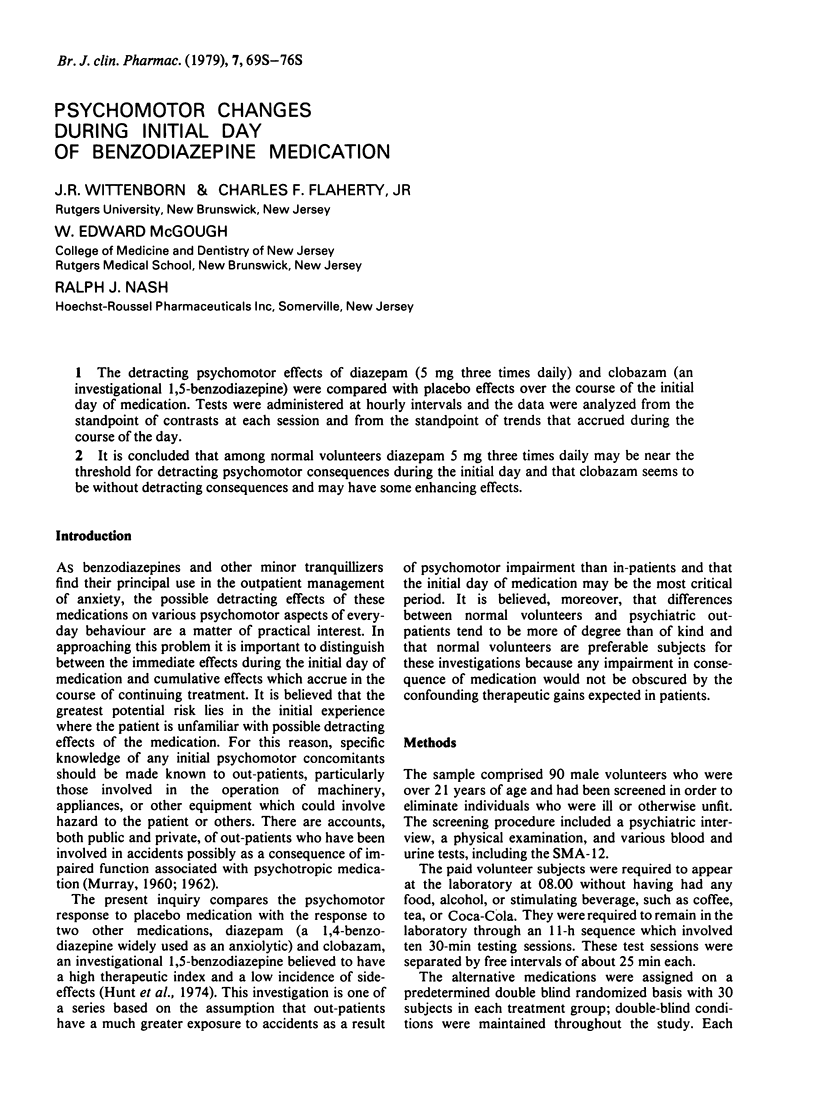
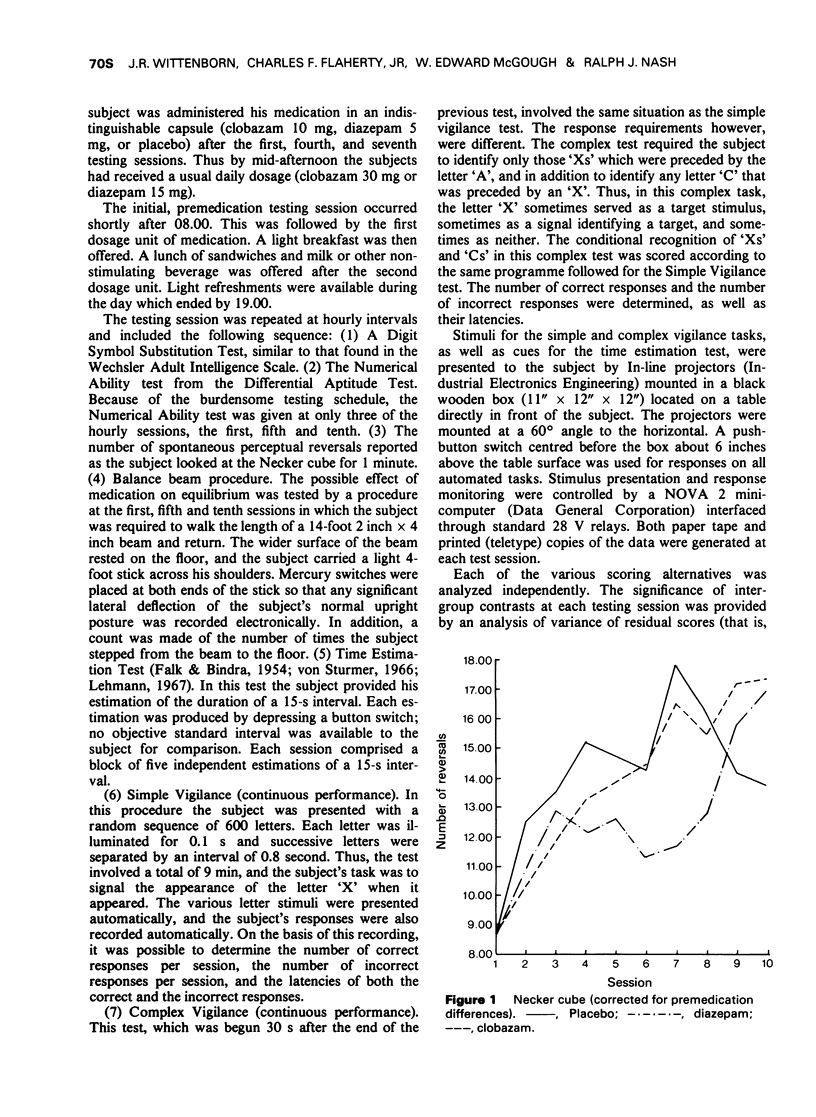
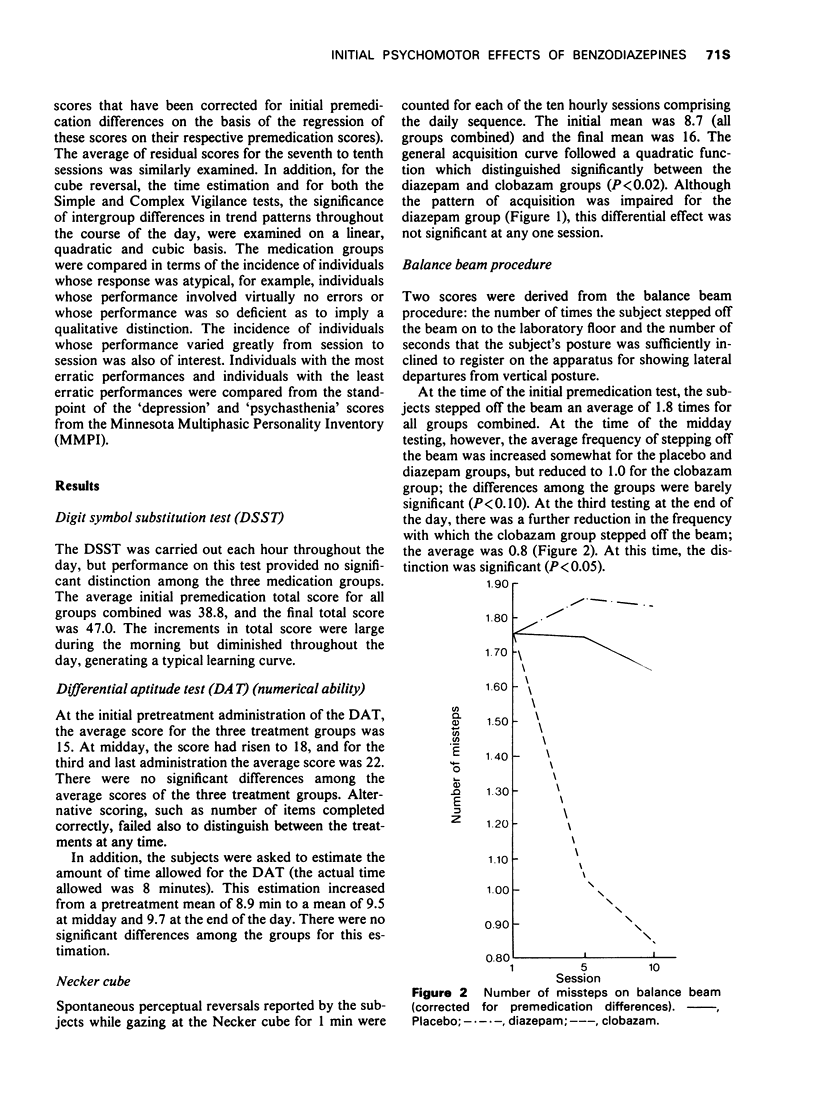
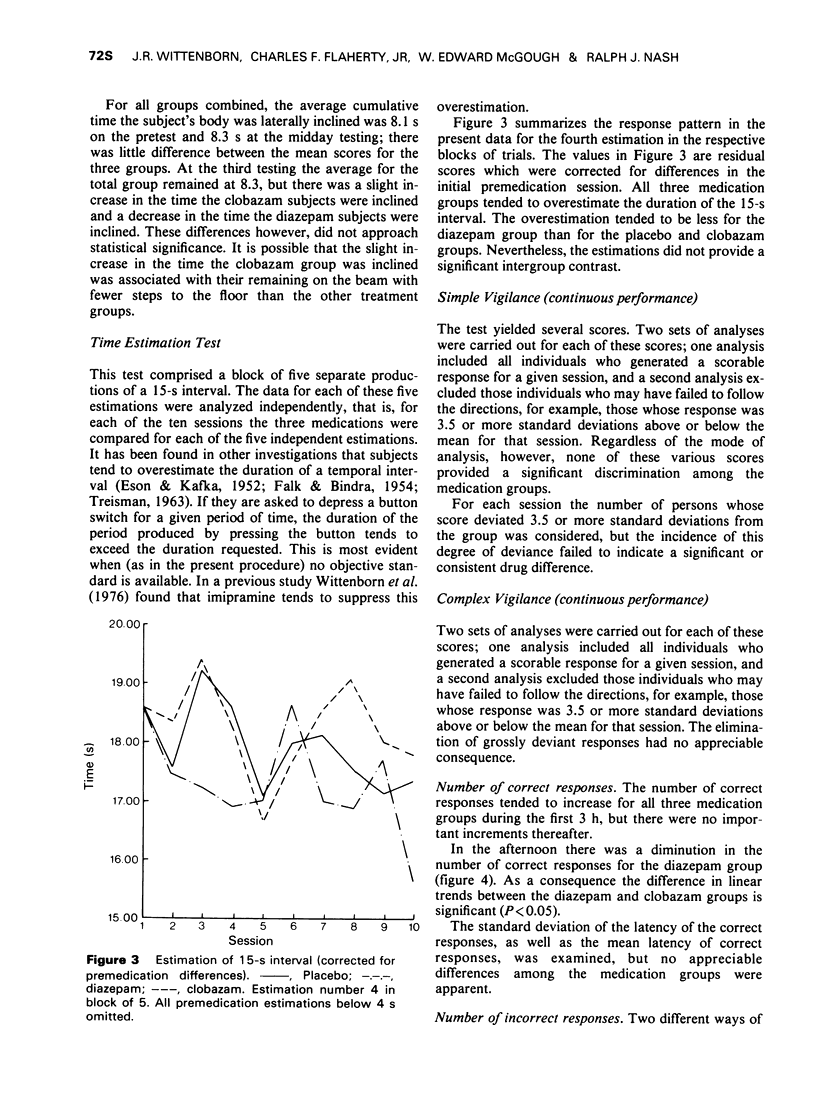
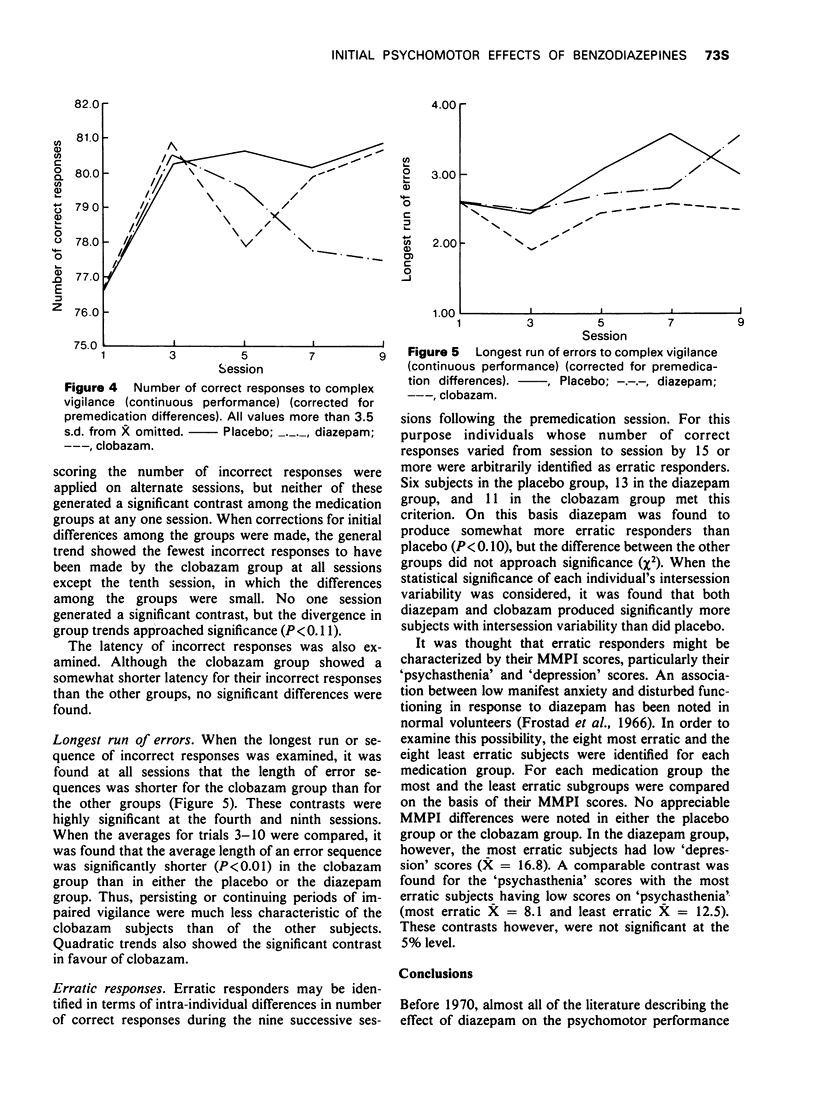
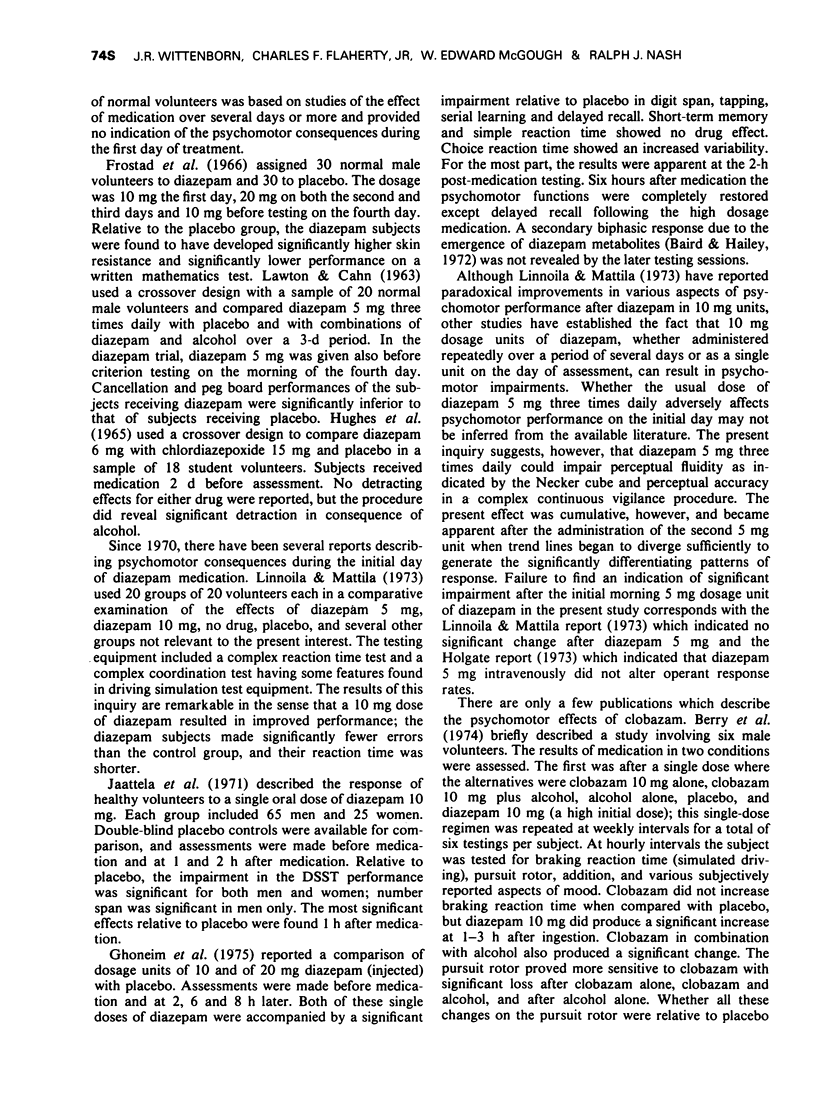
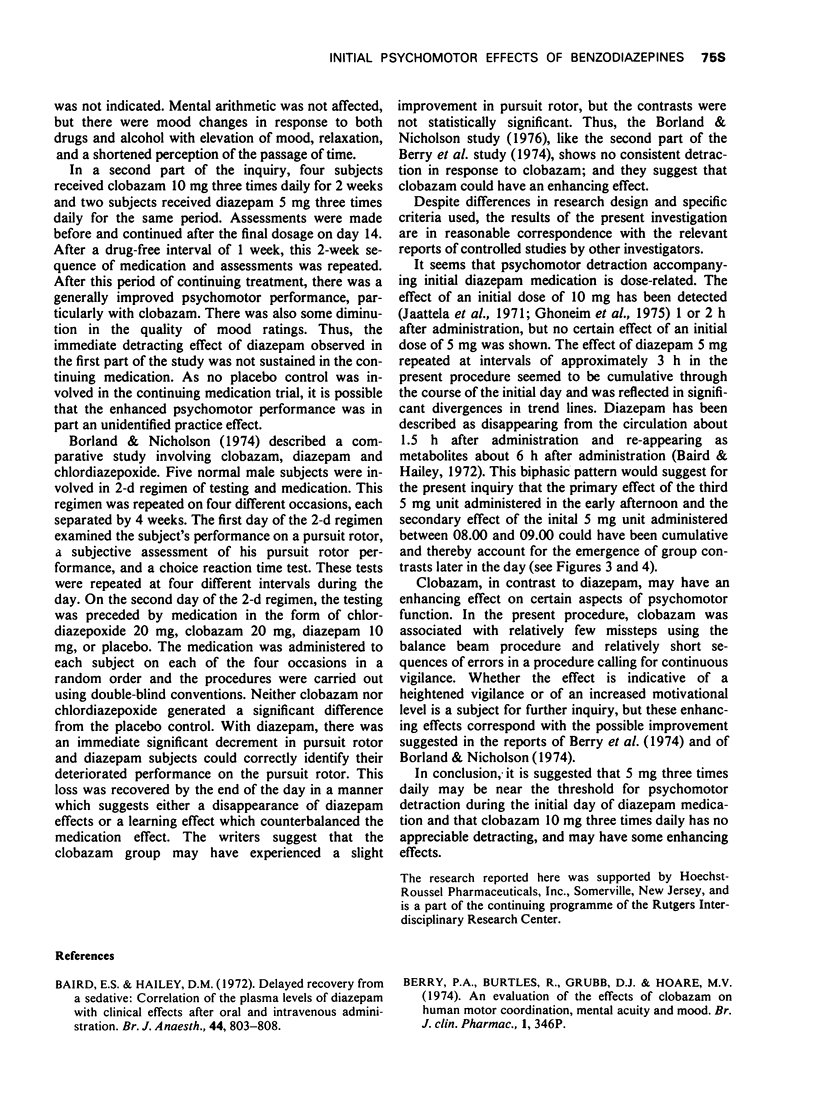

Selected References
These references are in PubMed. This may not be the complete list of references from this article.
- Baird E. S., Hailey D. M. Delayed recovery from a sedative: correlation of the plasma levels of diazepam with clinical effects after oral and intravenous administration. Br J Anaesth. 1972 Aug;44(8):803–808. doi: 10.1093/bja/44.8.803. [DOI] [PubMed] [Google Scholar]
- Borland R. G., Nicholson A. N. Immediate effects on human performance of a 1,5-genzodiazepine (clobazam) compared with the 1,4-benzodiazepines, chlordiazepoxide hydrochloride and diazepam. Br J Clin Pharmacol. 1975 Jun;2(3):215–221. doi: 10.1111/j.1365-2125.1975.tb01578.x. [DOI] [PMC free article] [PubMed] [Google Scholar]
- FALK J. L., BINDRA D. Judgment of time as a function of serial position and stress. J Exp Psychol. 1954 Apr;47(4):279–282. doi: 10.1037/h0061946. [DOI] [PubMed] [Google Scholar]
- Frostad A. L., Forrest G. L., Bakker C. B. Influence of personality type on drug response. Am J Psychiatry. 1966 Apr;122(10):1153–1158. doi: 10.1176/ajp.122.10.1153. [DOI] [PubMed] [Google Scholar]
- Ghoneim M. M., Mewaldt S. P., Thatcher J. W. The effect of diazepam and fentanyl on mental, psychomotor and electroencephalographic functions and their rate of recovery. Psychopharmacologia. 1975 Oct 14;44(1):61–66. doi: 10.1007/BF00421185. [DOI] [PubMed] [Google Scholar]
- HUGHES F. W., FORNEY R. B., RICHARDS A. B. COMPARATIVE EFFECT IN HUMAN SUBJECTS OF CHLORDIAZEPOXIDE, DIAZEPAM, AND PLACEBO ON MENTAL AND PHYSICAL PERFORMANCE. Clin Pharmacol Ther. 1965 Mar-Apr;6:139–145. doi: 10.1002/cpt196562139. [DOI] [PubMed] [Google Scholar]
- Jättelä A., Männistö P., Paatero H., Tuomisto J. The effects of diazepam or diphenhydramine on healthy human subjects. Psychopharmacologia. 1971;21(3):202–211. doi: 10.1007/BF00403859. [DOI] [PubMed] [Google Scholar]
- MURRAY N. Covert effects of chlordiazepoxide therapy. J Neuropsychiatr. 1962 Jan-Feb;3:168–170. [PubMed] [Google Scholar]
- Von Sturmer G. Stimulus variation and sequential judgements of duration. Q J Exp Psychol. 1966 Nov;18(4):354–357. doi: 10.1080/14640746608400053. [DOI] [PubMed] [Google Scholar]
- Wittenborn J. R., Flaherty C. F., Jr, McGough W. E., Bossange K. A., Nash R. J. A comparison of the effect of imipramine, nomifensine, and placebo on the psychomotor performance of normal males. Psychopharmacology (Berl) 1976 Dec 21;51(1):85–90. doi: 10.1007/BF00426327. [DOI] [PubMed] [Google Scholar]


